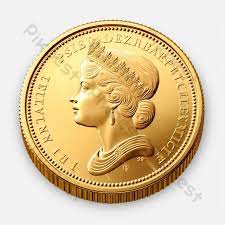In the second quarter, coins of 1, 2 and 5 rubles denominations made of nickel-plated steel will enter circulation in Russia. From 1997 to the present day, 1 and 2 rubles were issued from a copper-nickel alloy, and 5 from copper coated with cupronickel
In the second quarter of 2009, for the first time in Russia, coins of 1, 2 and 5 ruble denominations made of nickel-plated steel will enter circulation. From 1997 to the present day, they have been produced from a copper-nickel alloy (1 and 2 rubles) and from cupronickel-plated copper (5 rubles). The appearance of the coins will not change, but the vending machines will have to be reconfigured.
According to Georgy Luntovsky, First Deputy Chairman of the Bank of Russia, the main reason for the innovations was the rise in price of non-ferrous metals in previous years. In particular, in 2006-2007 the prices for nickel and zinc more than doubled, and for copper – by 68%, which led to an increase in the cost of coin blanks by almost 2 times.
In addition, the purchasing power of these banknotes has decreased, and the production process itself has become more costly. The increase in electricity tariffs and the cost of wages to workers led to the fact that the cost of manufacturing these coins exceeded their face value, Luntovsky explained.
However, against the backdrop of the crisis, the demand for non-ferrous metals fell sharply, which led to lower prices. Blanks for these coins have fallen in price by an average of 13%. The Central Bank of the Russian Federation expects that the economic effect of the current measures will be fully manifested after the end of the crisis. Savings when switching to cheaper materials can amount to 100-200 million dollars: a ton of steel on the London Metal Exchange now costs about 340 dollars, copper – 4590 dollars, nickel – 12 thousand dollars.
The program to reduce the cost of production started in 2006, when coins of 10 and 50 kopecks were made from tombac-coated steel instead of brass. The process of replacing the material requires a change in technological processes, sampling and testing the received trial coins for the influence of factors that affect them during circulation.
The smallest coins – 1 kopeck and 5 kopecks – have been steel since the introduction of the current denominations. However, their prime cost is almost 10 times higher than the face value. The only Russian coin that will not be made of steel will be the 10-ruble coin. It is made of bimetal: the yellow ring is made of brass, and the disk on which the denomination is depicted is made of cupronickel.
According to the Central Bank of the Russian Federation, as of April 1, 2009, there were 40.659 billion coins in circulation, of which 11% (4.473 billion pieces) were 1 ruble coins, 4% each (1.626 billion pieces) were 2 and 5 ruble coins. . The total weight of ruble coins in circulation is approximately 14.5 thousand tons, two-ruble coins – 8.3 thousand tons, five-ruble coins – 10.5 thousand tons, in total – more than 33 thousand tons. In 2007, Russia spent more than 6 billion rubles on minting coins.
Central banks in many countries are trying to switch to using cheaper materials for making small money. In 1982, rising copper prices forced the US Mint to cut the percentage of copper in the cent from 95% to 2.5% (the rest being zinc), resulting in a lightening of 0.6 grams. A nickel is three-quarters copper and one-quarter nickel. Their production and transportation in 2007 cost the mint 1.67 cents and 9.53 cents, respectively. Coins in denominations of 10, 25, 50 cents and 1 dollar are made of copper coated with a copper-nickel alloy.
In Europe, the three smallest coins, from 1 to 5 cents, are made of copper-plated steel. At the same time, in Finland and the tourist regions of Greece and Italy, one-cent and two-cent change is not in circulation. The next three coins – 10, 20 and 50 cents – are made from the so-called “Nordic gold” – an alloy of copper, aluminum, zinc and tin. Finally, 1 and 2 euros are made from two alloys: copper with nickel and nickel with brass. In contact with human sweat, the effect of a nickel battery is formed between these alloys, which has become the subject of indignation for allergy sufferers.
The British two pound coin also consists of a “silver” circle (a copper-nickel alloy) and a “gold” ring (an alloy of copper, nickel and zinc). The latter is also the material for the £1 coin. The 50, 20, 10 and 5p coins are made of cupro-nickel, while the 2p and 1p coins are made of copper-plated steel.
And the Japanese, as well as the Chinese, produce a trifle from aluminum: this applies to a coin with a face value of 1 yen. 5 yen (with a hole) is made of 60–70% copper and 30–40% zinc, a 10 yen coin is 95% copper, the rest is zinc and tin, 50 yen (also with a hole in the middle) is made from cupronickel, 100 and 500 yen – also cupronickel.





